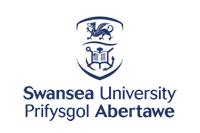Mary Wollstonecraft
(b. April 27, 1759, Spitalfields, London – d. Sept. 10, 1797, Somers Town, London )
Gender: F
Mary Wollstonecraft (1759-1797) was born in London, the second of seven children. The family moved to Yorkshire, where her father made an unsuccessful attempt to become a gentlemen farmer, and returned to London when she was nineteen. She was obliged to earn her own living, and was variously a lady’s companion, a governess, and a teacher in a school set up by her and her sisters. She became a member of the famous Dissenting church at Newington Green, headed by Rev Richard Price. The publisher Joseph Johnson paid her to write a book on female education, Thoughts on the Education of Daughters (1787), and employed her to produce translations and book reviews. Mary joined the circle around Johnson that included such radical thinkers as Thomas Paine and William Godwin, and in 1790 wrote A Vindication of the Rights of Men, a riposte to Edmund Burke’s Reflections on the Revolution in France. This was followed in 1792 by her most famous work, A Vindication of the Rights of Woman, which was an immediate best-seller and was re-reprinted within months; an American edition and a French translation appeared in the same year, and translations into German and Italian soon followed. Mary set off for France in December 1792, intending to write about her impressions of political events for the benefit of English readers. She arrived in Paris during the first days of the trial of Louis XVI, and narrowly escaped incarceration during the Terror. She had fallen in love with Gilbert Imlay, an American adventurer, and bore his child, but he declined to marry her, causing her to make two attempts at suicide after her return to London in 1795. The British government was by this time forcibly suppressing the political clubs that demanded parliamentary reform and increased rights for working men. Mary’s response to the growing social conservatism was to write a novel entitled Maria, or the Wrongs of Woman, defending women’s right to sexual freedom and attacking society’s refusal to allow them proper employment (Hannah More was particularly disgusted by its defence of a woman who had committed adultery.) Mary and William Godwin fell in love, but kept separate establishments until she became pregnant, when they married. Their daughter, the future Mary Shelley, was born in 1797, but Mary died ten days later of septicaemia. Godwin published a memoir of her life, which ruined her reputation by disclosing her suicide attempts and illegitimate children; for the growing conservative backlash she became the archetypal “unsex’d female”.
Also known as:
- Mary Wollstonecraft Godwin
Authorities
| Oxford DNB DOI |
| Wikipedia |
Please note that all dates and location information are provisional, initially taken from the library and archive catalogues. As our section editors continue to work through the material we will update our database and the changes will be reflected across the edition.
Browser support: The website works best using the Chrome, Edge, and Firefox browsers on the PC, and only Chrome and Firefox on the Mac.




